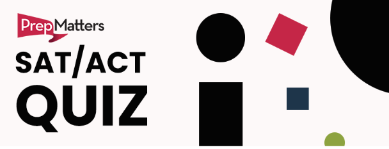Posted on: March 12, 2019
Congratulations! It’s officially fall and the PSAT is behind you. What do you do now? Forget it and walk away? Bide your time until the holidays? Even though you’re not a junior, for whom the test has marginally more significance, there is still value in revisiting the test you just took. Results are scheduled to return in December. Take some time before then to make the most of the experience.
A Real Practice Test
Although the PSAT you just took will not be considered for college admission, consider it a warm-up and preview for next year’s PSAT. This test was an official College Board product. As such, it gives us valuable insight into what to be mindful of for next year’s test. Ideally, you took the test under semi-realistic conditions. Ask yourself some questions: Did I finish all of the sections on time? What grammar questions had me stumped? Which math topics were very familiar and which were pretty new? How was the critical reading? Which passages were easy for me to follow? Where was it harder to maintain my focus?
Additionally, it can be useful debriefing the overall testing experience before it’s colored by your results. Did you give yourself eight or more hours of sleep the previous two nights? Was temperature a factor for you or did you remember to wear layers? Did you have breakfast in the morning and a snack on the break? Though you were stationary during the test, your brain and body were still burning energy. Did you remember your calculator and your pencils or did you have to borrow? Now that you have an even better idea of what a College Board admissions test feels like, how can you be better prepared for the next one? What went well and what will you repeat? More importantly, how would you like next year’s testing experience to be different?
Applying What We’ve Learned
Since you had to sit through the test for a couple of hours, let’s make that time work for you. This presents an opportunity to talk to your teachers and parents about your questions or concerns from the test. Perhaps you did fine on a test that won’t count, but maybe you realized you could use some advice on slogging through boring passages. Maybe working your way through the math revealed some discomfort around certain topics, or reminded you that things could be going better in Algebra II. Adults in your life love having the opportunity to help. Think about who you enjoy talking to and let them know that you have questions, or if you might like getting a little support in a class or two.
This Year & Beyond
As discussed earlier, the results of this test have no bearing on your high school future or your college options. For better or worse, you will probably start receiving mail from colleges interested in telling you all about their offerings and inviting you to start a dialogue. For tips on how to manage this impending avalanche of information, see our latest NEDTalks video. In terms of planning beyond the PSAT, most students take the official SAT or ACT in their junior year. Are you doing well in a rigorous or high-level math, science, English, history, or language course? Perhaps it’s time to explore whether a related AP course next year is a good option for you.
Watch for the release of the results in December. Go over them with your parents and get your questions answered. In terms of planning for the actual SAT or ACT, keep your eyes open for the opportunity to take a practice ACT at your school during the year. If none is offered, talk to your tutor about taking a practice test after school finishes in June. Again, all U.S. schools accept both the ACT and the SAT. After you have the results of both practices, you will be in a better position to determine if the SAT (which is almost exactly like the PSAT) or the ACT, is the better test for you. Feel free to reach out to your tutor if you want help interpreting the results.
Although it has no immediate impact, the PSAT gives you the opportunity to evaluate both your test-taking readiness and to plan for the real deal.




